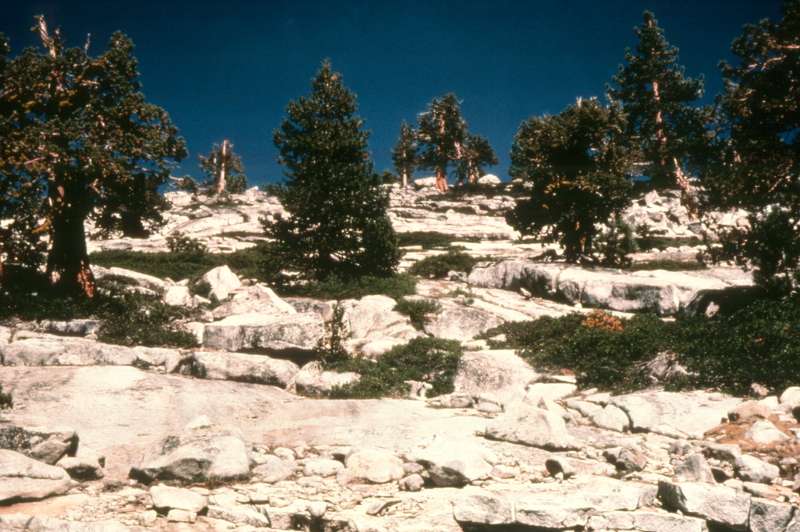The Montane Environment
The montane environment differs from that at lower elevations , primarily because the climate is cooler.
Temperature
Temperature is colder at higher elevations because rising air expands and expanding air cools. Precipitation in montane environments often comes in the form of snow. The growing season for plants is short, and decomposition (which is highest in moist, warm environments) is slow.
Snow
Snow can affect plants by burying plants for part of the year, by accumulating on branches and adding weight to those branches, and by damaging plant tissues through wind-blown snow and ice crystals.
Soils
Soils in the mountains are often thin and nutrient-poor. Thin soils occur because
- Chemical weathering of bedrock, a factor that contributes to soil development, is slow
- Decomposition, which adds organic matter to soil is slow
- Erosion from slopes often removes soil

There are areas of soil accumulation, such as in the bottoms of valleys and canyons in the mountains, where both soil and water accumulate and may cause mountain meadows to form.